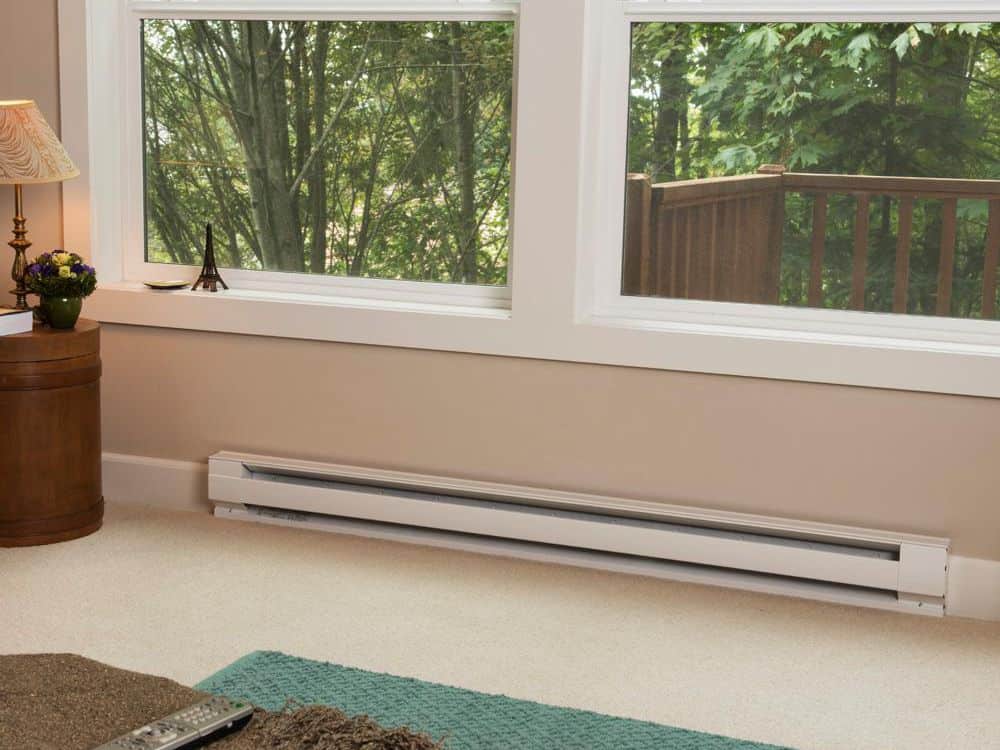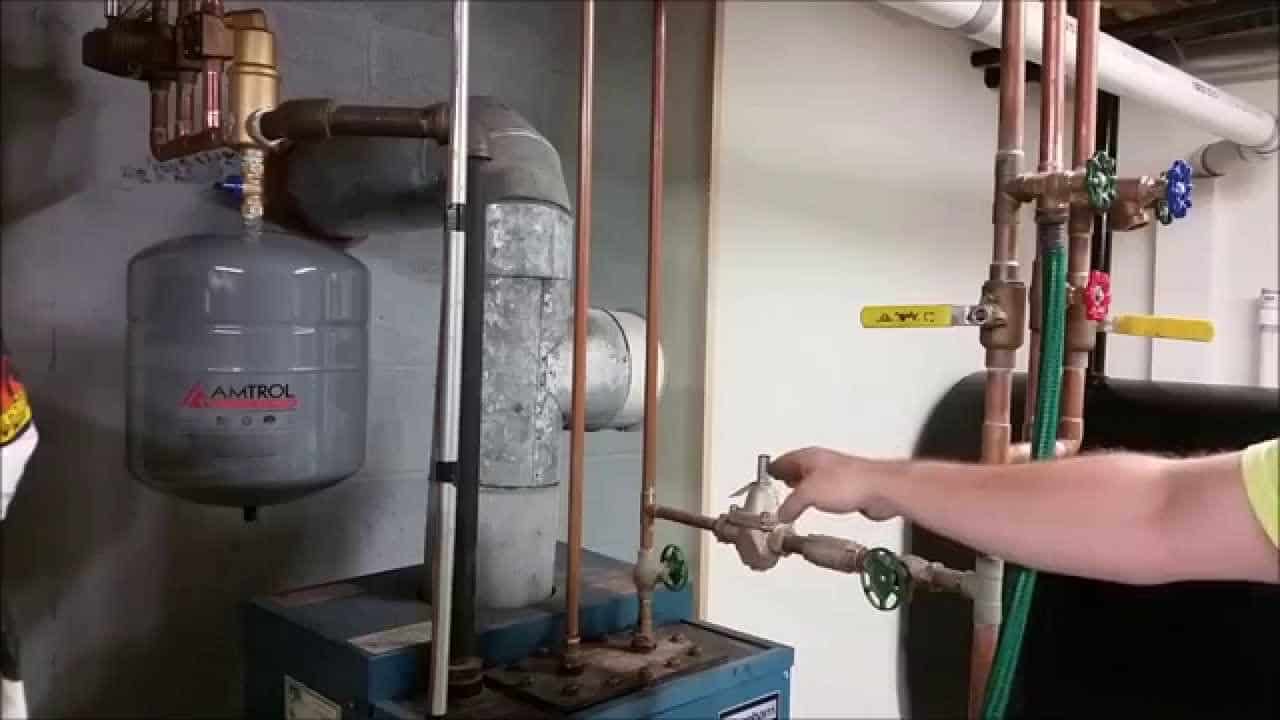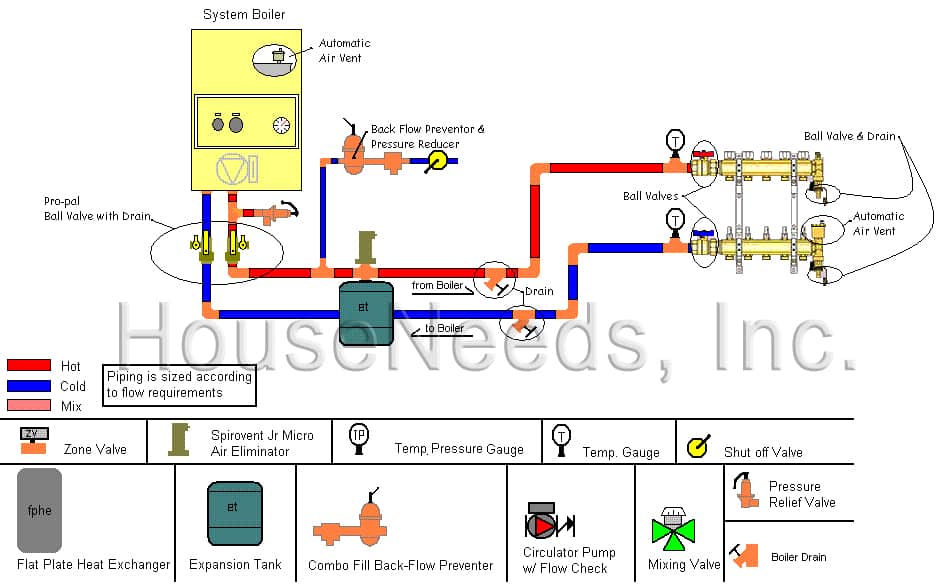How To Drain And Refill A Baseboard Heating System Easy Steps To Drain Water
Baseboard heating systems are one of the most popular and an old age heating system that is used by many people that help to keep your place warm on a cold breezy day. They are very popular among the households.

The maintenance of this system is very necessary for efficient working and it might require a bit more and it is not just about cleaning the vents or the metal framework. You are going to take real care of it if you want it to work properly. You also need to make sure that the accumulated water is cleaned up every one year.
We will look at baseboard hectares today and try to cover everything about them. We will also look at the steps required to drain and refill the baseboard heating system. Firstly we will look at how the baseboard heating system works. I have also mentioned the pros and cons of using a baseboard heating system.
How does Baseboard Heater work?
The working of this heater isn’t much hard to define; it has a simple mechanism. In this, the boiler heats the water and keeps it warm and that certainly heats the hydronic system of heating. This helps to keep the temperature evenly distributed across the dashboard.
As time passes the sediments start to build up across the dashboard, the pipes, and also the expansion tank. If the sand blocking blocks the water from the baseboard, the effectiveness of the heating system reduces.
When time goes on, the build-up of sediment continually reduces the water pressure management capability of the tank.
How to drain and refill water on the Baseboard Heating System?
This isn’t a very difficult thing to do and you can do this all on your own. All you are going to need is the below-mentioned tools and then follow the simple steps. This will ensure the circulation of water throughout the system in a proper way.

Tools to gather
- A garden hose
- Flat screwdriver
- A small dish
- A towel
- 1 bucket
- An adjustable wrench
Warmup
This is the first thing which you are required to do. Let the machine warm-up. You need to start the heater on medium settings and let it circulate the water all around the system.
You need to run the heater for at least one hour and after that, switch it off and also remember to turn the circuit breaker off.
Search the heat valve
The next step now is finding the Heat valve. You will find the main system tank on the bottom. You need to search for the bleed valve which looks similar to a hose outlet at the bottom of the tank. It has a threaded edge.
Now you should turn the gas valve off. This is a gas valve of the boiler. You can do this by using a wrench. This must be a brass valve and usually connected to the building’s gas pipe which is outside the boiler.
Keep safety first
You can use an absorbent material that will help you to avoid a lot of leakages.
You can put this absorbent material on the nozzle while the process of bleeding. Take a bucket and place it on the floor. This will be very helpful to avoid spills on the base.
The heating system should be cool enough to avoid burns so you must give it a couple of hours to cool down. The water should be cooled down and then you should continue with other things.
Manage the leakage
Add the garden tube (female) fitting to the boiler drain. The "drain" label can be labeled on the ground of the furnace. As for the male end of the garden trousers, lead it to the drain on the field. To start the drainage process, change the valve chronologically. To switch the screw sideways, you might require a slotted or hex screwdriver.
Now take a screwdriver and open the bleeding screws on after another slowly and gradually. Remove all the bleeding screws that are there on the top of the baseboard. This will let air enter and also helps in pushing or removing the water out from the boiler quickly. When the hot air is exiting the system there will be a hissing sound. While the water and hot air are coming out you need to maintain a safe distance as it can be warm. You must avoid any direct contact.
Turn the valve off
Now you should turn off the bleed valve until there is a steady stream visible of water flowing from the pipe. You need to properly monitor the male fitting of the garden hose.
It will stop coming out of the system after a steady stream of water. This will give a signal that the air is totally removed and with this, the debris and dust and all the sediments that were inside the hydraulic system of the heater are also removed. Once you see this has happened then you can remove the garden hose and then shut off the boiler drain fitting.
For turning the hose fitting you can rotate it counter-clockwise clockwise and it will get removed from the central unit. After this, you can rotate the drain accessories clockwise so that it gets closed. Now take all the screws and plug them in using a screwdriver to their dedicated position one by one.
Refill the tank
Now you need to rotate the boiler’s supply valve in a clockwise direction so that the water supply opens and this will help you to fill the water again. You should take a screwdriver to open the screws near the pan.
This is to ensure that the air bubbles in the boiler are forced out by the water. When the water is flowing out of the leaking fitting, shut it down and fix the screw in the joint.
Turn on the boiler
The final step will be turning on the boiler and for this, you can use a wrench. Using a wrench you can turn the valve handle in a clockwise direction. You can use the instruction guide to light up the pilot. Also, you need to witch on the circuit breaker.
Draining water Off from Baseboard Heating System
This is a very simple process but you need to pay a little attention while doing it and also be a little patient while doing this as it is a time-consuming process that needs care.
- You need to learn everything about your baseboard heating system as for how it works and all the parts and their purpose. For this, you can also make use of a manual or the guide that comes with the system. You can do this under expert supervision too.
- The main pipe which is present inside the system is usually constructed using PVC and it is directed from the mainline to the boiler. This is present and helps to drive cold water to a heated one. This is then pushed back from the loft tank.
- There is also one other pipe that is constructed using brass in most of the systems. This goes from the bottom part of the tank to the system. It is recommended to turn off the tube and then continue with the cleaning up.
- In most of the instances, this is the pipe which is attached to the central part of the system and this is where most of the blockages are. It is to be cleaned in case you are having trouble filling it.
- There are great chances where the valve is present in the pipe. If you are unable to locate it and you have no idea what to do now then you need to close the main water source pipeline. This will certainly turn off the supply to the ball valve and in turn, will help you to drain down the system when you want to do it as per your convenience.
- You need to find the lowest leakage. This might be certainly on the lowest floor. The lowest floor means the ground floor or the basement. This will be close to the ground which simply means a couple of inches from the storey. It doesn’t have a drop-down leg too.
- If you do, you can drain the pipes and recharge them separately in this area. Make sure that you properly trace the tubing so that all the water is drained in one go.
- The first thing to be sure about is to have safety measures with you while doing this. By safety measure, I mean a towel and a garden hose. This small carefulness can save you from big troubles so one shouldn’t ignore such things. You also need to ensure that the tube is of the perfect size and it properly fits in the opening.
- Now you have to properly extend the hose and take it towards the drainage. Make sure you do not shove the pipe anywhere near the trash or in it as this will block the view of the flow of water regularly. You need to see the flow of water and the progress.
- The things that you are doing right now will effectively put the vacuum down on each of the radiators. You have already done with letting the water out from the tank and the main pipe will probably be emptied too. The thing is that each of the heaters will require a bit of air to be blown out of them when it’s opened. This can be done using a radiator bleed key.
- It is going to have a little bit of taper on the ends. This is a very easy and handy thing to use and especially with some of those old age radiators as they tend to get rusty and have to be painted and polished multiple times.
- You have to start by finding the highest radiator bleed. This could often be found in the bathroom. The best place that you can start from is the towel rail.
- In case you have many radiators in the house then you should reach the top floor and open that and after you are done opening you’ll notice a sound of air getting sucked into the radiator.
- Now you need to hold on to the bolt using an adjustable wrench and with that you can twist the nut which is inside with the help of the bleed key. You will notice hissing of air out indicating air that is getting sucked inside.
- You need to follow this properly and systematically with every radiator and also note down or remember the ones you have opened. You need to fit the latter so forgetting to close any of them can be a problem and result in mishaps.
- Once you are done with opening every radiator inside your house you need to go down the house. Once you notice that the system level is decreasing and each of the radiators is adequately draining. If you are uncertain if any radiators have not yet completely dumped, check that the lockshield is open, and make sure that the valve is still spacious if you have the thermostatic radiators.
Refilling Water In Baseboard Heating System
This is to be done after draining so you need to make sure you wait for a certain time.

Wait for 20 minutes to one hour and this waiting time will depend solely on the number of radiators you have in your house. The water should eventually be drained and you have to leave it for some time. This is generally a good idea in case some water is clogged in the pipe and it needs time to make itself down the hose.
The refilling of water is the next step after drainage into the baseboard heating system. The first step which is already mentioned earlier is to make sure that each of the radiator bleeds that were opened is properly closed.
Now you need to switch the feed Valve in the right way and carefully. You need to keep in mind that the drainage valve with the hose is still not closed and it is kept open and it has got a reason behind this. When you opened the radiator bleeds, all the air got pushed in and now it has to be pushed out and made sure that no vacuum is present in the heating system.
You’ll see that there’s some leakage of water from the hose. You need to ignore and leave it as it is for a while which means for 10 minutes as accurate until the air gets pushed out. Once the time has passed you need to shut the drainage valve off and pull off the hose safely with care. After this start checking the radiators and start this from the ground floor that each radiator is air-free and you can do this by opening the valve and checking that there is any air getting pushed out.
I said to start from the ground floor and it has a reason because if you let the air get pushed out from the base and then it gets carried upstairs as it would be more effective.
If you are done with all the things I’ve mentioned above then you can start the heating system after this. You will enjoy the warmth from your heater. This process is to be repeated at least once a year.
Pros and cons of baseboard heating system
It is really important to take a look at the pros and cons of the same before making any decision on building a new baseboard heating system to make a correct decision on it.
There are many benefits of a baseboard heating system, but there are many pitfalls that you need to make the right choice for yourself and keep in mind.

Pros of baseboard heating
- Baseboard heaters run softly and do not make noise that will interrupt you, so when you chill at home, you won’t have to think about unnecessary noise around you. By causing noise, they don’t disturb your peace and sleeping schedules.
- It is very quick to mount the baseboard heating system as we showed that the assembly process is very straightforward and you can do it all yourself. It also doesn’t need ductwork of any sort.
- As the procedure is very straightforward and can be done in very little time, the expense that you would incur for the installation of the Baseboard unit is very minimal. If you’re thinking of installing a heater at home because you’re short on budget, the best choice for you is baseboard heaters.
- One of the best sources of heating is baseboard heaters and they can also be found in large spaces. Quite fast, they have decent heating with good.
- A baseboard heater’s cleaning process is very easy and you can do it very easily. You’re not going to need a lot of material, because it can easily be completed in a short time. For improved operation, you need to keep it clean daily.
- Baseboard heaters are very durable, and for a very long time, they will stick with you. You should not need to think about them for at least 20 years after you have mounted them.
Cons of baseboard heating
- Baseboard heaters need a lot of electricity to operate and, in such situations, they are not very reliable, so you would have a strong energy source at your home to make them work.
- They are very expensive, and since they take so much energy to operate, they can very quickly raise your power bill.
- You need to keep them clean and you need to do this periodically, as the dirt can get clogged in the vents if they get filthy, which may create heating issues or overheat the system.
- They’re not one of the most appealing things you’re going to keep at home, and they need a lot of space as well. This will permanently narrow the space in your house.
- The heater inside the machine will get hot and stuff around them can be hurt, so you need to be vigilant as they can overheat all the time.
Baseboard heating systems are very effective and useful and the only thing is taking care of them. If you do that right it will serve you properly for a long time. If you are considering buying a new baseboard heater then you can also find it here.
Click on this link to check the current price and shop
https://www.amazon.com/DIMPLEX-NORTH-AMERICA-PC3010W31-Wireless/dp/B00KY3S794
https://www.amazon.com/Cadet-8F2025W-Electric-Baseboard-Heater/dp/B00FQ589MU
https://www.amazon.com/Fahrenheat-F25426-500Watt-Convector-240Volt/dp/B000H7QWFS
Conclusion
Baseboard heating systems are very useful and effective and you will find them in most households.
If you want efficient and effective working of baseboard heating systems then you need to maintain them in a good way. The drainage and refill of water in a baseboard heating system is very crucial and cleaning is also very necessary every year.
Today we saw how to drain water from a baseboard heating system. We also saw how to refill it. You can do it all by yourself. You just need to follow the steps properly. I have also mentioned the pros and cons of baseboard heating and the working of the same. I hope you find this article useful and relevant.
Reference
https://qlabe.com/heaters/how-to-drain-and-refill-a-baseboard-heating-system
https://homeguides.sfgate.com/air-valves-work-home-radiators-102658.html
